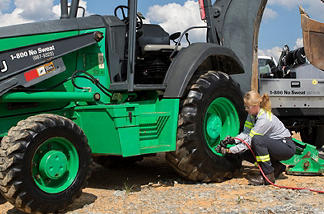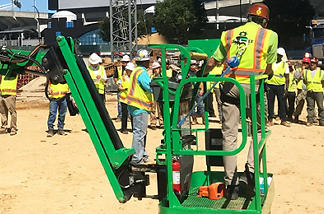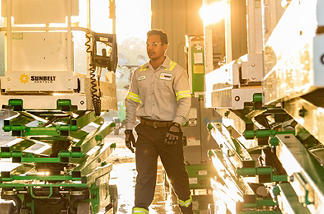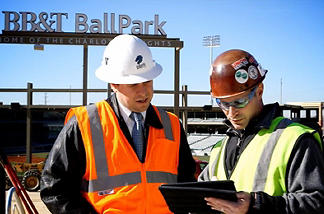Use the Sunbelt Rentals app
Find, rent, and return equipment, right at your fingertips
ANSI Mobile Elevating Work Platforms
Formally known as aerial work platforms, they are now called mobile elevating work platforms under American National Standards Institute A92.20, which replaces A92.3, A92.5 and A92.6. The new ANSI A92 guidelines include design, safe-use and training standards. All North American manufacturers and operators need to understand and abide by the new safety features for compliance.
The new standards classify equipment into two different groups. Group A consists of MEWPs that move vertically but stay inside the tipping lines, and Group B includes all others, such as boom-type MEWPs where the platform extends past the machine’s chassis. In addition, the equipment is grouped into three types. Type 1 can only be driven in the stowed position, Type 2 can be driven elevated but is controlled from the chassis, and Type 3 can be driven elevated but is controlled from the work platform. The standards A92.20 (for design), A92.22 (for safe use) and A92.24 (for training) replaced standards A92.5 for boom-supported platforms and A92.6 for scissor-type platforms. Please familiarize yourself with the following key changes:
An active load-sensing device is required on all A92.20 MEWPs. Machines will actively monitor load and interrupt normal operations by sounding an alarm if overloaded. Users need to be sure no overloading occurs on machines built under A92.20.
Most rough terrain equipment is available only with solid tires or foam-filled tires based on the new stability testing guidelines. The A92.20 requires machines to be tested when air-filled tires are deflated.
For outdoor use, machines may require increased machine weight for more stability and reduced platform capacities, particularly in scissor lifts and vertical masts.
Machines that could previously only operate on level surfaces can be used on slopes. These machines are required to have a tilt sensor alarm and cutout. If the incline surpasses the slope limit, the system will disable boom and drive functions.
Flexible devices, such as chains, are not acceptable entrance gates. In addition, toe boards must be on all areas of the platform. Gates and toe boards replace chains on entrances for electric scissor lifts, vertical masts and boom lifts.
The railing height requirement has been raised for small indoor scissor lifts. To fit through standard doorways, taller, folding rails replace fixed, non-folding rails on select models.
Sunbelt Rentals experience
Ensure your peace of mind with additional coverage provided by Sunbelt Rentals Rental Protection Plan
Easily find and rent the tools and equipment you need for any project. Plus, save time with delivery, invoice management, and so much more with the new Sunbelt Rentals App.
Safety is our top priority and we aim to provide our customers with the knowledge they need to keep their jobsites safe.
We are tirelessly committed to "Getting It Done" for our customers. We care. We know what it takes because we've been there. We make it happen.
We make it simple to apply for a line of credit to secure the equipment you need and complete projects on schedule.







